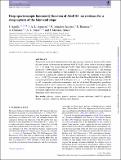Files in this item
Deep spectroscopic luminosity function of Abell 85 : no evidence for a steep upturn of the faint-end slope
Item metadata
| dc.contributor.author | Agulli, I. | |
| dc.contributor.author | Aguerri, J. A. L. | |
| dc.contributor.author | Sanchez-Janssen, R. | |
| dc.contributor.author | Barrena, R. | |
| dc.contributor.author | Diaferio, A. | |
| dc.contributor.author | Serra, A. L. | |
| dc.contributor.author | Mendez Abreu, Jairo | |
| dc.date.accessioned | 2014-12-04T15:31:07Z | |
| dc.date.available | 2014-12-04T15:31:07Z | |
| dc.date.issued | 2014-10-11 | |
| dc.identifier | 158988756 | |
| dc.identifier | 96a4bd08-e9eb-415a-ac86-162de70e0eaf | |
| dc.identifier | 000344181600006 | |
| dc.identifier | 84929580872 | |
| dc.identifier | 000344181600006 | |
| dc.identifier.citation | Agulli , I , Aguerri , J A L , Sanchez-Janssen , R , Barrena , R , Diaferio , A , Serra , A L & Mendez Abreu , J 2014 , ' Deep spectroscopic luminosity function of Abell 85 : no evidence for a steep upturn of the faint-end slope ' , Monthly Notices of the Royal Astronomical Society , vol. 444 , no. 1 , pp. L34-L38 . https://doi.org/10.1093/mnrasl/slu108 | en |
| dc.identifier.issn | 0035-8711 | |
| dc.identifier.uri | https://hdl.handle.net/10023/5869 | |
| dc.description | IA, AD and ALS acknowledge partial support from the INFN grant InDark and from the grant Progetti di Ateneo TO Call 2012 0011 ‘Marco Polo’ of the University of Torino. | en |
| dc.description.abstract | We present a new deep determination of the spectroscopic luminosity function (LF) within the virial radius of the nearby and massive Abell 85 (A85) cluster down to the dwarf regime (M* + 6) using Very Large Telescope/Visible Multi-Object Spectrograph (VLT/VIMOS) spectra for ∼2000 galaxies with mr ≤ 21 mag and 〈μe,r〉 ≤ 24 mag arcsec−2. The resulting LF from 438 cluster members is best modelled by a double Schechter function due to the presence of a statistically significant upturn at the faint end. The amplitude of this upturn (αf ~ -1.58+0.19-0.15), however, is much smaller than that of the Sloan Digital Sky Survey (SDSS) composite photometric cluster LF by Popesso et al., αf ∼ −2. The faint-end slope of the LF in A85 is consistent, within the uncertainties, with that of the field. The red galaxy population dominates the LF at low luminosities, and is the main factor responsible for the upturn. The fact that the slopes of the spectroscopic LFs in the field and in a cluster as massive as A85 are similar suggests that the cluster environment does not play a major role in determining the abundance of low-mass galaxies. | |
| dc.format.extent | 5 | |
| dc.format.extent | 1510579 | |
| dc.language.iso | eng | |
| dc.relation.ispartof | Monthly Notices of the Royal Astronomical Society | en |
| dc.subject | galaxies: clusters: general | en |
| dc.subject | galaxies: clusters: individual: Abell 85 | en |
| dc.subject | galaxies: dwarfs | en |
| dc.subject | galaxies: luminosity function, mass function | en |
| dc.subject | Dwarf galaxy population | en |
| dc.subject | Color-magnitude relation | en |
| dc.subject | Digital sky survey | en |
| dc.subject | Mass profiles | en |
| dc.subject | Infall regions | en |
| dc.subject | fornax cluster | en |
| dc.subject | Outer regions | en |
| dc.subject | Virgo | en |
| dc.subject | Satellites | en |
| dc.subject | SDSS-DR4 | en |
| dc.subject | QB Astronomy | en |
| dc.subject | QC Physics | en |
| dc.subject.lcc | QB | en |
| dc.subject.lcc | QC | en |
| dc.title | Deep spectroscopic luminosity function of Abell 85 : no evidence for a steep upturn of the faint-end slope | en |
| dc.type | Journal article | en |
| dc.contributor.institution | University of St Andrews. School of Physics and Astronomy | en |
| dc.identifier.doi | 10.1093/mnrasl/slu108 | |
| dc.description.status | Peer reviewed | en |
This item appears in the following Collection(s)
Items in the St Andrews Research Repository are protected by copyright, with all rights reserved, unless otherwise indicated.

